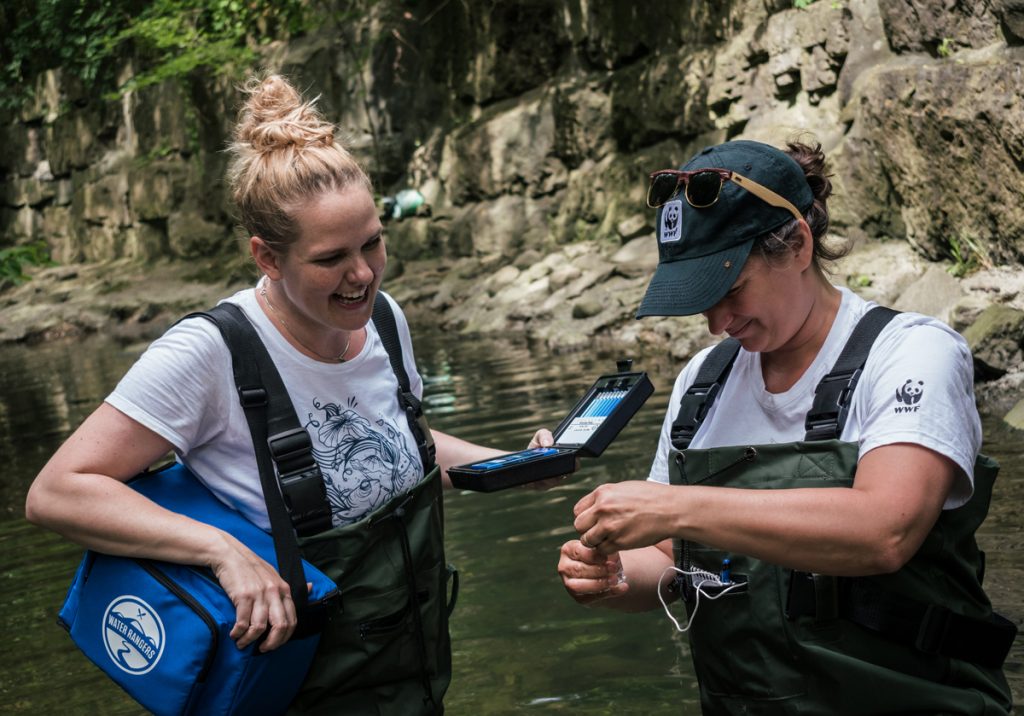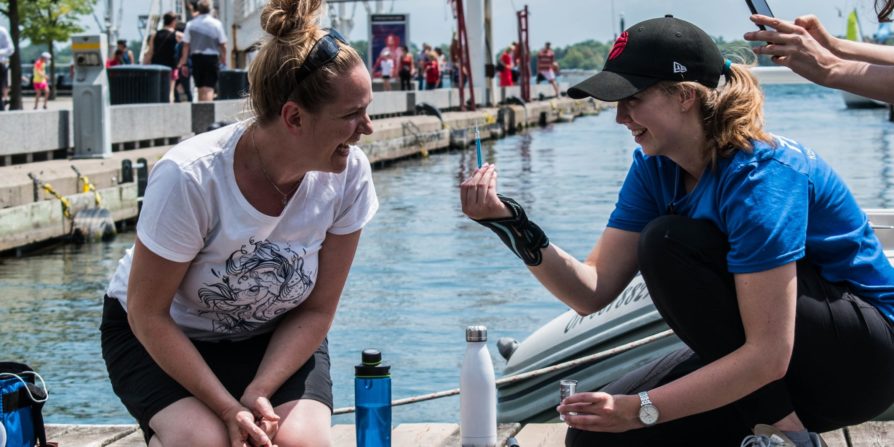
Water Rangers: empowering community scientists to care for our waterways
As we navigate a global pandemic and a just recovery, we want to amplify the stories of those who are working towards a low-carbon future. To build a vibrant low-carbon economy, we’ll need innovative tech that supports our needs while preserving the environment. That’s why Bullfrog Power is sponsoring the Centre for Social Innovation’s Earth Tech, an accelerator for startups and nonprofits working on climate and freshwater solutions.
WWF-Canada’s 2017 Watershed Report uncovered a troublesome fact about Canada’s waterways: more than half of them are considered data deficient. Without the data to show us where there might be problems, how can we care for our precious freshwater resources?

Kat Kavanagh, Executive Director and co-founder of Water Rangers, is on a mission to fill in the blanks, or really, to help you fill in the blanks yourself. Water Rangers empowers people without science training to sample the lakes and rivers near them, upload their data into an app, and learn to become stewards of their waterways. As Kat puts it, “I’m absolutely obsessed with making it easier for anyone to protect our waterways.”
As an app, website, and game designer, Kat loves to create immersive, joyful experiences that combine games and learning. “Every day I design systems to help people do complex tasks, and games to help people understand difficult concepts,” she explained. “These skills have been so valuable in my work.” Kat also pursued a master’s in Integrated Water Management so that she could bring a combination of design, technology, and science to create amazing water testing experiences.
Dipping a toe in the water
In 2014, Kat moved near a place she loves more than anywhere: the lake where she spent her summers growing up. “My dad has been doing water samples there for a decade, but it hasn’t been easy,” Kat told us. “It takes weeks to get lab results back, and they’re very difficult to decipher. As a designer, this was unacceptable to me!”
Kat knew there had to be a better way for us to understand and take care of the bodies of water we love. She joined the AquaHacking tech challenge in 2015 and started working on an open data platform built for the average person, plus easy-to-use water testing kits. She went on to become a winner of WWF-Canada’s Generation Water Tech Challenge last year.
Water Rangers has empowered thousands of community scientists to test their local waterways and share their findings online. Together, they’ve contributed more than 27,000 observations in more than 3,000 locations.
For Kat, testing the water is just the beginning. Water Ranger’s immersive programs have shown that as people learn about water and participate in testing, they’re much more likely to commit to action. “As participants track baseline water quality data and fill in the gaps for waterways near them, they’re also forming a network of dedicated water stewards who work together to solve water issues,” Kat said. “We envision a future where crowdsourced information makes it easy for all Canadians to understand when water is healthy and when it needs help.”
Water Rangers across the country are already improving local water health. One community scientist spotted a leaking pipe, so he tested the water nearby. Upon finding high levels of chlorine, he was able to call the city and get the pipe repaired right away.


A ripple effect
Water Rangers is growing fast, and Kat’s focus right now is getting equipment out to her community. “It’s been challenging, but ultimately rewarding to see how many people are interested!” she said. “We’re building systems that help us scale, and Earth Tech has been integral to helping us transition. We know our model and ideas work—our tests’ accuracy is comparable to that of professional equipment—but now we need as many participants as possible to help us get a better picture of water health.”
“Often, people tout technology as the solution for all of society’s problems. But technology without meaningful integration is not innovative—tech needs to be simple and easy to use so that it can be adopted widely.”
Kat Kavanagh
Beyond scaling her non-profit, Kat is also working on integrating Water Ranger’s data into decision-making processes. For example, her user-friendly system can send notifications to a conservation authority to let them know when algae blooms have been reported.
For Kat, paying attention to our freshwater resources is the beginning of a movement. “Most people end up connecting to waterways and wanting to do more,” she said. “Things like shoreline cleanups or planting native vegetation to restore habitat along the water’s edge are the best things we can do. Little actions matter!”
Curious about other Earth Tech ventures? Click here to read how RainStick is making a greener shower—and proving that you can be sustainable without sacrifice.
